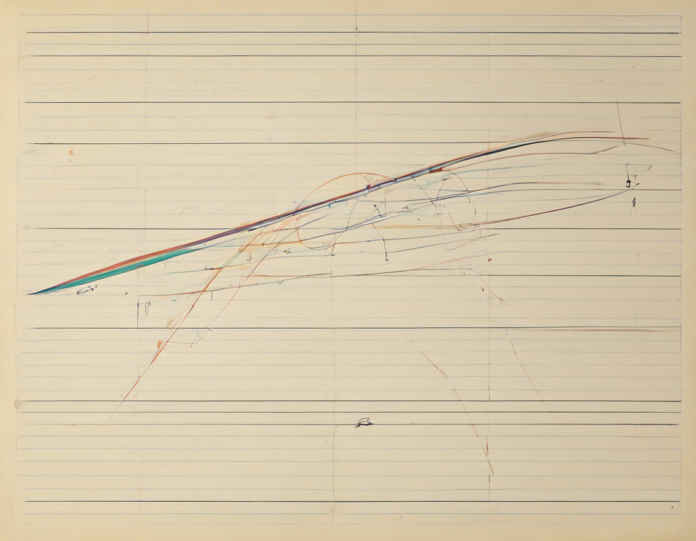Motion in a straight line is a fundamental concept in physics, describing the movement of objects along a single axis without deviating from a straight path. This concept is crucial in understanding the motion of various objects in real-world scenarios, providing insights into speed, velocity, acceleration, and distance traveled. In this article, we will delve into the key principles of motion in a straight line, discussing the essential concepts, equations, and applications that govern this fundamental aspect of physics.
Key Concepts of Motion in a Straight Line
1. Position and Displacement
- Position: Position refers to the location of an object relative to a reference point. It is often expressed in terms of distance and direction from the reference point.
- Displacement: Displacement is the change in position of an object and is a vector quantity that considers both magnitude and direction. It is a crucial parameter in analyzing motion in a straight line.
2. Distance and Displacement
- Distance: Distance is the total length of the path traveled by an object, irrespective of direction. It is a scalar quantity and is always positive.
- Displacement: Displacement, as mentioned earlier, is the change in position and considers direction. It can be positive, negative, or zero, depending on the direction of motion.
3. Speed and Velocity
- Speed: Speed is the rate of change of distance with respect to time. It is a scalar quantity and is always positive.
- Velocity: Velocity is the rate of change of displacement with respect to time. It is a vector quantity and considers both magnitude and direction.
4. Acceleration
- Acceleration: Acceleration is the rate of change of velocity with respect to time. It can be positive (acceleration), negative (deceleration or retardation), or zero (uniform motion). Acceleration is a vector quantity.
Equations of Motion in a Straight Line
In motion in a straight line, several key equations help describe the relationship between displacement, velocity, acceleration, and time. The most common equations include:
- Equation of Motion for Uniform Acceleration:
- ( v = u + at )
- ( s = ut + \frac{1}{2}at^2 )
-
( v^2 = u^2 + 2as )
-
Equation of Motion without Time (when ( v ), ( u ), ( a ), and ( s ) are known):
-
( v^2 = u^2 + 2as )
-
Equation for Displacement with Average Velocity:
- ( s = \frac{(u + v)}{2} \times t )
Applications of Motion in a Straight Line
Understanding motion in a straight line is crucial in various real-world applications, including:
-
Physics Experiments: Motion in a straight line is often studied in physics experiments to analyze the behavior of moving objects and validate theoretical concepts.
-
Engineering and Design: Engineers and designers use principles of motion in a straight line to design vehicles, machinery, and structures where linear motion is involved.
-
Sports and Biomechanics: Athletes and sports scientists utilize concepts of motion in a straight line to analyze and improve performance in various sports activities.
-
Transport and Traffic Management: Understanding motion helps in optimizing traffic flow, designing transportation systems, and ensuring safety on roads and highways.
Frequently Asked Questions (FAQs)
1. What is the difference between distance and displacement in motion?
- Answer: Distance is the total length of the path traveled, while displacement is the change in position from the starting point in a specific direction.
2. How is speed different from velocity in motion?
- Answer: Speed is a scalar quantity that measures the rate of motion, while velocity is a vector quantity that considers both speed and direction.
3. What does negative acceleration signify in motion?
- Answer: Negative acceleration, also known as deceleration or retardation, indicates a decrease in velocity over time.
4. Can an object have a non-zero acceleration even when its speed is constant?
- Answer: Yes, an object can have a non-zero acceleration if there is a change in direction, even if the speed remains constant.
5. How can equations of motion be applied in real-life scenarios?
- Answer: Equations of motion are used to predict the behavior of moving objects, calculate distances, velocities, accelerations, and time taken in various practical situations.
6. Why is displacement considered a more accurate measure of motion than distance?
- Answer: Displacement takes into account the direction of movement, providing a more precise indication of the overall change in position of an object.
7. What role does time play in determining the motion of an object in a straight line?
- Answer: Time is a crucial factor in motion analysis as it helps calculate velocity, acceleration, and the overall change in position of a moving object.
8. How do negative velocities impact the interpretation of motion in a straight line?
- Answer: Negative velocities indicate motion in the opposite direction, and they are essential in distinguishing between forward and backward movement.
Conclusion
In conclusion, motion in a straight line is a fundamental concept in physics that lays the foundation for understanding the movement of objects along a single axis. By grasping the key principles of position, displacement, speed, velocity, and acceleration, individuals can analyze and predict the motion of objects in various scenarios. Equations of motion provide a quantitative framework to describe and calculate the parameters of motion, enabling applications in physics, engineering, sports, and other fields. Understanding motion in a straight line is essential for anyone interested in physics, mechanics, or the behavior of objects in motion.

